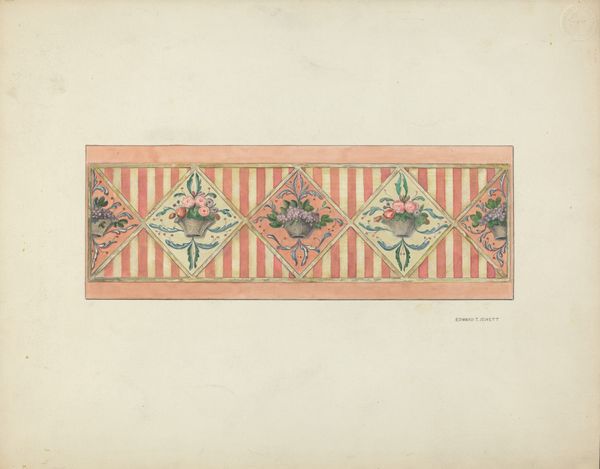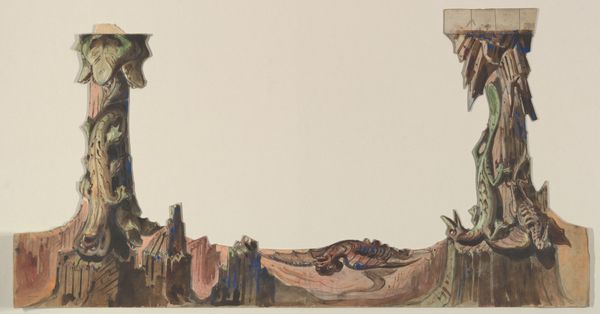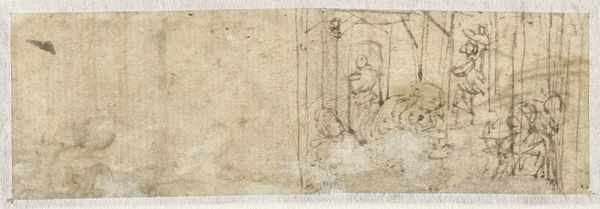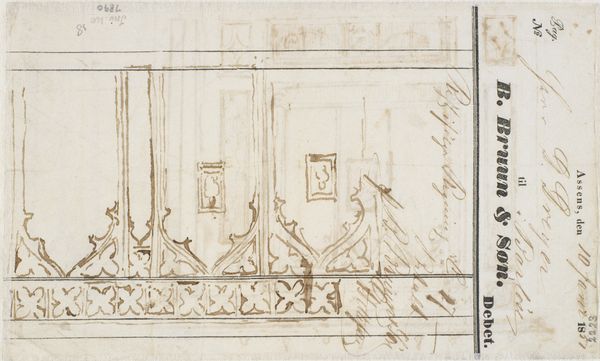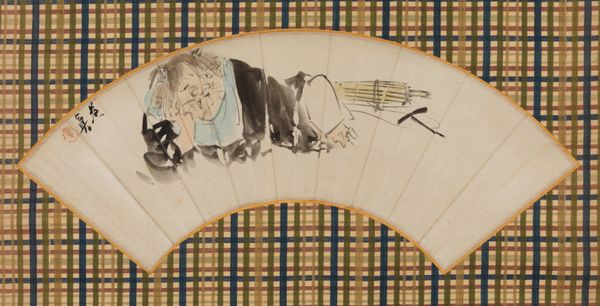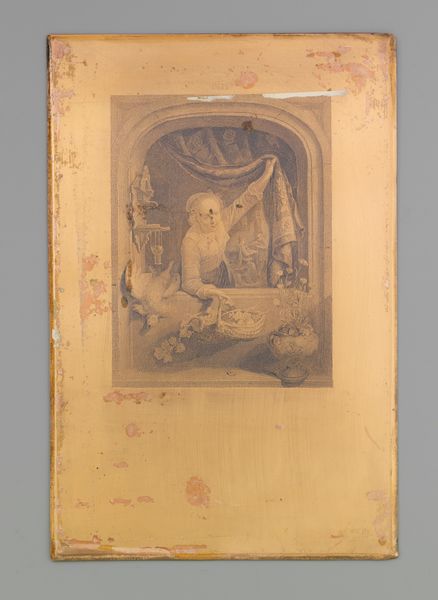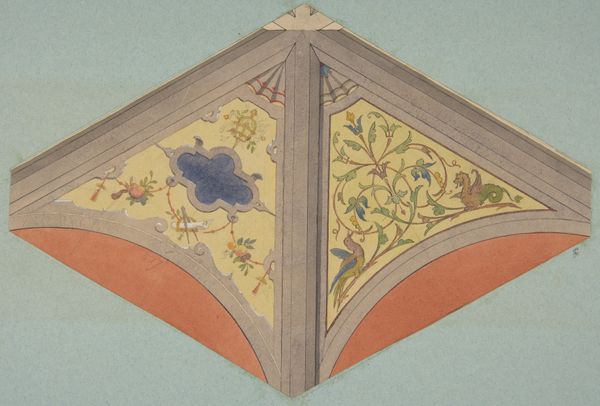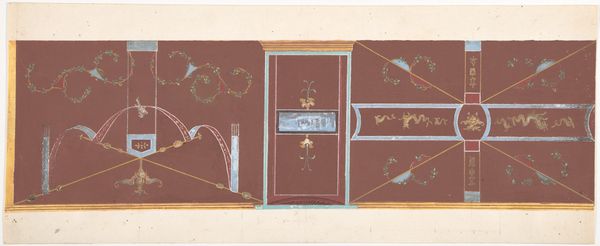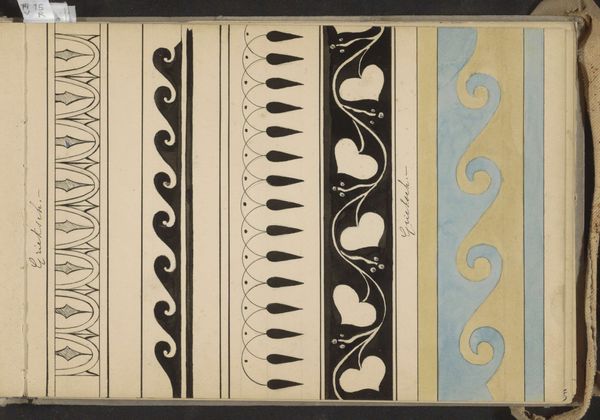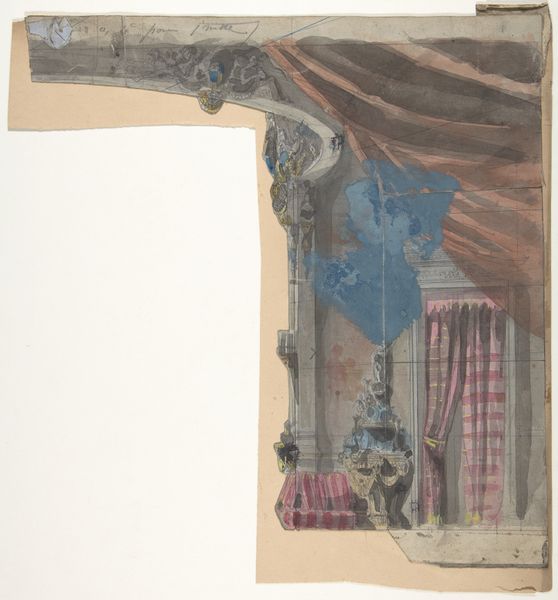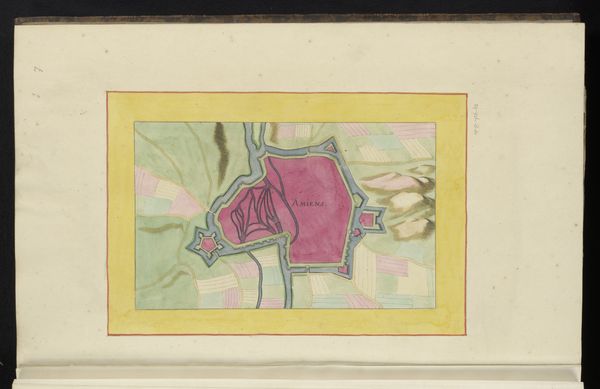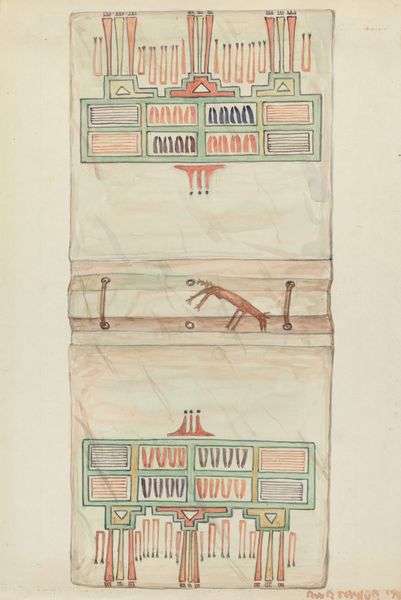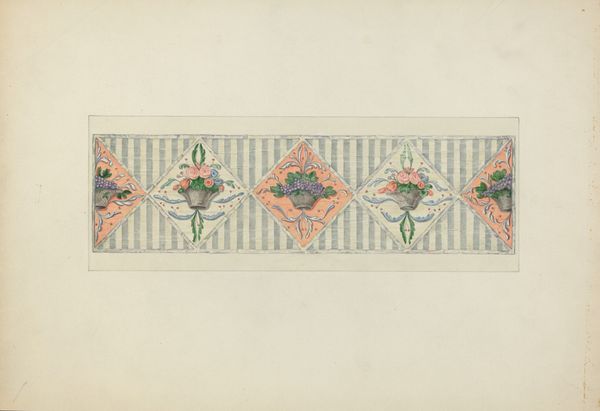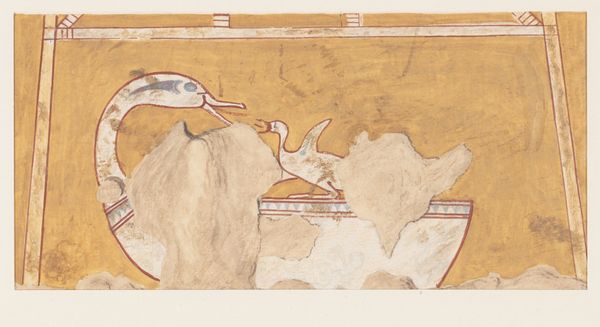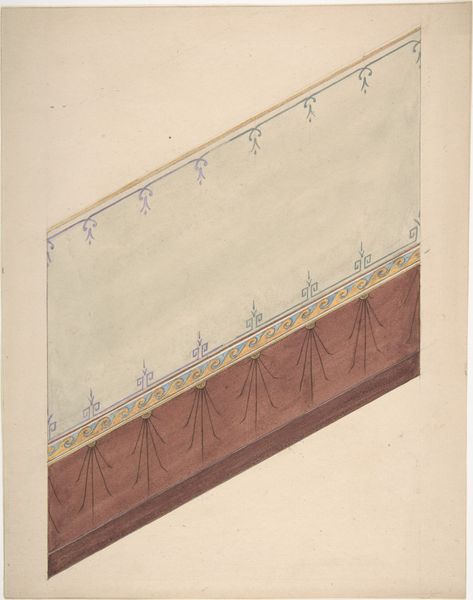
Dimensions: height 82 mm, width 168 mm
Copyright: Rijks Museum: Open Domain
Editor: This is Florent Grau's "Slaapkamer van Napoleon in het Groot Trianon, Versailles" from 1859. It's a delicate watercolor painting showing Napoleon's bedroom. I'm struck by the pastel colors, it's so much softer than I imagined the room would be. What stands out to you? Curator: I’m interested in the very *act* of producing this image in watercolor in 1859. The soft, almost ephemeral, quality contrasts starkly with the opulence it depicts. Why choose watercolor for documenting Napoleon’s bedroom, almost half a century after his death? Consider the industrialization occurring during Grau’s time. Editor: I see what you mean. Everyone probably expected something grander to document something so historic, and painting something like that is such a conscious choice. What's so significant about his medium here? Curator: Precisely! Watercolor was becoming more readily available, mass-produced. Is Grau commenting on the romanticization of Napoleon, rendering his image softer, consumable, reproducible for a growing middle class through this easily accessible medium? The ethereal quality speaks volumes. The *means* became the message, right? Editor: So, rather than focusing on Napoleon's grandeur, it's a subtle commentary on how accessible even history, and its prominent figures, were becoming? The contrast between the subject and the medium is definitely telling. Curator: Indeed! It makes you wonder about the artist's intention. He transforms a symbol of imperial power into a watercolor, which, by that period, hints to its demystification, or maybe its appropriation, at the hand of an expanding art market that aimed to feed the new bourgeoise class and its obsession with reproducibility and access. It definitely puts a different spin on things. Editor: I’ve never thought about watercolors like that before, as related to cultural consumption rather than just a "technique"! Thank you for shifting my perspective! Curator: My pleasure! Always question the materials and methods of production. They reveal far more than what’s simply on the surface.
Comments
No comments
Be the first to comment and join the conversation on the ultimate creative platform.
